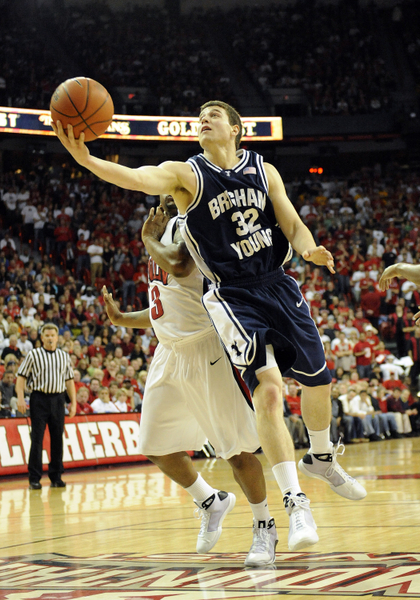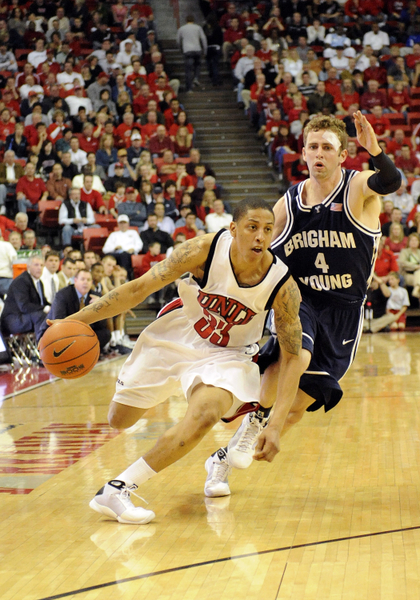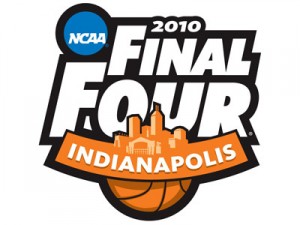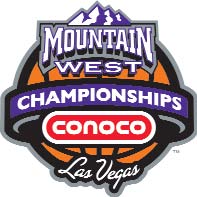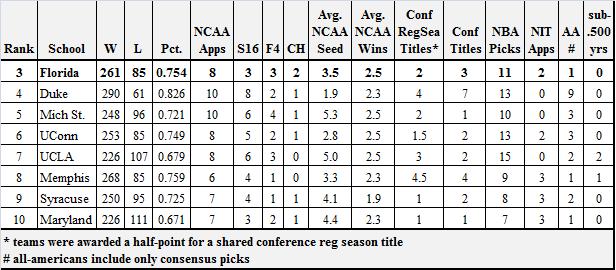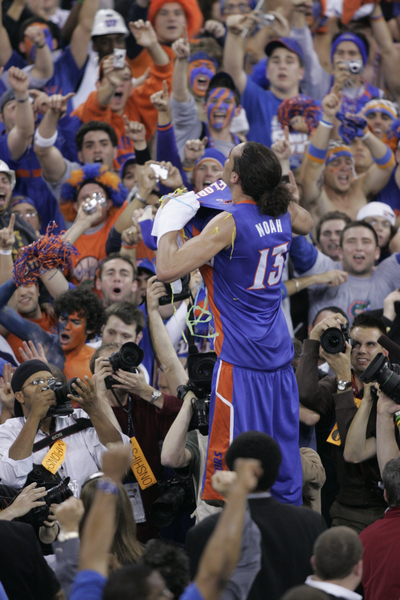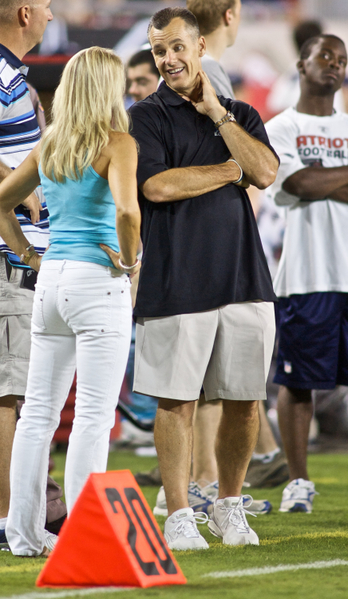Checking in on… the MWC
Posted by Brian Goodman on November 24th, 2010Andrew Murawa is the RTC correspondent for the MWC and Pac-10 conferences.
A Look Back
The start of the 2010-11 season has been just about everything the Mountain West commissioner’s office could hope for after a tumultuous offseason. After almost two weeks of play, five MWC teams remain undefeated and the nine conference teams have posted a combined 25-6 record with the four biggest contenders for postseason berths a combined 13-1, a New Mexico loss at Cal the only blemish.
Team of the Week
San Diego State – The Aztecs have been busy thus far, posting an early 5-0 record including four wins in the CBE Classic. The highest profile win for Steve Fisher’s squad was a road victory over Gonzaga during the ESPN College Hoops Tipoff Marathon, when SDSU showed the rest of the college basketball world what MWC followers already knew: this team is pretty darn good. Perhaps even more impressive for the Aztecs is that their 5-0 record has come entirely on the road thus far, with their first home game scheduled for this Friday when they host San Diego Christian of the NAIA.
Player of the Week
Kawhi Leonard (Sophomore), San Diego State – It’s very likely that you’ll be seeing either Leonard or Jimmer Fredette’s name in this space most weeks this season. While Fredette’s 25.7 point per game average thus far has certainly left him deserving of this honor this time around, and while Leonard’s Aztec teammate Billy White may have had the biggest single performance of the young season, the nod goes to Kawhi here. He’s led his team in rebounding every night out, never failing to grab double digit boards thus far, he’s averaged 18.8 points per contest, and has even displayed his versatility and ever-improving skill set, pairing three steals with four three-pointers in SDSU’s win over IUPUI on Sunday.
Newcomer of the Week
Will Clyburn (Junior), Utah – Last year about this time, it was New Mexico’s junior college transfer Darington Hobson who was making a name for himself as a force to be reckoned with in the MWC. A year later, Utah has its own juco transfer making waves around the Rockies. On a Ute roster featuring eight new faces, it is Clyburn’s who has shone most brightly, leading Utah in scoring in each of their three games, averaging 20.7 points and 7.3 rebounds per game, while knocking down five of his 12 attempts behind the arc along the way. Last year’s Lobos were picked to be a middle-of-the-pack team last year before Hobson’s emergence catapulted them to a conference title. For the Utes to entertain similar aspirations, Clyburn will need to keep up his early pace.
Game of the Week
San Diego State 79, Gonzaga 76 – For only the fifth time in the 82 games in the history of Gonzaga’s McCarthey Athletic Center, a visiting team came in and defeated the Bulldogs on their home court. Behind a career-high 30 points from Aztec senior forward Billy White (on 14-18 shooting and paired with nine rebounds, seven of which came on the offensive end), San Diego State built up a lead as high as ten before hanging on down the stretch and withstanding a similarly outstanding 35-point effort by Zag senior guard Steven Gray to wrap up a big win that will be a feather in the Aztec cap come Selection Sunday.
Game of the Upcoming Week
Utah at Utah State – The Aggies of Utah State have already given a MWC team all they could handle this season, when they went into BYU’s Marriott Center and fought the Cougars to the bitter end in an entertaining game, but this time around they get to welcome the Utes into the Smith Spectrum in Logan for another in-state battle. Utah is looking to prove that they are on the way back from last year’s disastrous collapse, but with a bevy of young and relatively untested newcomers, the trip to Logan could be daunting
Power Rankings
- San Diego State (5-0): Aside from the heroics of Billy White and Kawhi Leonard detailed above, the Aztecs have also gotten a big boost from a Santa Clara transfer, sophomore guard James Rahon. Rahon lived up to his reputation as a deadly three-point shooter early in his career in red and black, knocking down three straight threes in the middle of the second half of a tightly contested battle at Long Beach State to break the game open and put the Aztecs on their way to their first win of the season. On the season he is averaging a shade under ten points per night and converting three-point attempts at a sparkling 52.9% clip. Likewise, senior point guard D.J. Gay has shown his leadership abilities, time and again making big plays to spark game-deciding runs for the Aztecs. While Rahon has lived up to his rep as a three-point bomber, Gay has added his own deadly three-point shot to an already strong arsenal, having knocked down 11 of his 22 attempts thus far. If those two can maintain anywhere near that kind of pace, the Aztecs will be looking at a very favorable seed come March, as their imposing frontline has been all that was previously advertised.
- BYU (3-0): Coming into the season, the Cougars pretty much knew what they were going to get from their backcourt tandem of Jimmer Fredette and Jackson Emery. So far, Emery has been off to a slow start, averaging just nine points per game and struggling to find his shooting touch, to the tune of 34.6% from the field and 27.8% from behind the arc. But head coach Dave Rose has no worries about Emery’s game coming around in due time. His concerns prior to the season were with an eye towards the rest of the team, specifically in the front court. In the early going, junior Noah Hartsock and sophomore Chris Collinsworth have done a lot to ease Rose’s mind. Hartsock stepped up immediately, exploding out of his reserve role in the opener to post a career-high 21 points, then backing that up with 15 points and four blocks against Utah State. Collinsworth, for his part, has been rock-solid, averaging seven rebounds per game and throwing in 8.3 points per game, with a high of 15 points in the Cougars blowout of Chicago State. While BYU still has some work to do figuring out all their roles, Hartsock and Collinsworth have already shown that the talent is there.
- UNLV (3-0): It was a rocky offseason in Sin City, with dismissals, suspensions and injuries scarring the landscape, but three games in, all those rough patches are in the past, with the Rebels having just posted one of the more impressive MWC victories in the early season, a 68-65 victory over visiting Wisconsin. Last year’s leading scorer, senior guard Tre’Von Willis, sat out the first two games of the season (easy wins over second-rate competition) as a result of offseason legal difficulties, before returning in a reserve role against Wisconsin, but it was juniors Chace Stanback and Oscar Bellfield who provided the biggest performances for head coach Lon Kruger in the win over the Badgers. Each player knocked down four threes, with Stanback totaling 25 points and Bellfield notching 18. UNLV’s ability to knock down the three had been a question mark in the lead up to the season, but both players have done their best to answer that query, with Bellfield having hit seven of his 12 attempts (58.3%) and Stanback six of his 15 (40%). While Willis was not a major factor in his return to action, he did hand out five assists in his 23 minutes of play.
- New Mexico (2-1): The Lobos have faced probably the most consistently tough lineup of games of any MWC in the young season, and perhaps not surprisingly for a young team, have looked pretty strong at home and downright awful in their one road trip. Given that the New Mexico roster is missing junior guard Phillip McDonald due to a partially torn elbow ligament (he is currently day-to-day), is waiting on the services of incoming transfer Drew Gordon (eligible December 17) and is breaking in four new freshmen (including two freshmen starters) and a sophomore transfer, Emmanuel Negedu who, you know, basically died a year ago, I’m not going to ding the Lobos too hard for their 25-point loss at Berkeley, especially considering they looked good in defeating Arizona State at The Pit a few days before that, but Steve Alford and company are definitely having some growing pains in adjusting to life without Darington Hobson and Ramon Martinez. While some difficulty in the non-conference schedule is understandable, the Lobos have a relatively light schedule between now and the end of December when they play in the Las Vegas Classic (a matchup against Colorado and then the winner of Indiana/Northern Iowa), then travel to Texas Tech and Dayton prior to conference play. New Mexico will need to have things straightened out by then, lest they get out of non-conference play with only the Arizona State victory to point to.
- Colorado State (2-0): For now I’ll stick with the Rams at the number five spot, if only because their season still seems to be a week away. Thus far, the Rams have hosted Arkansas-Pine Bluff and traveled to Denver, posting workmanlike wins each time, with seniors Andy Ogide and Travis Franklin leading the way with almost identical numbers: 17 points, 6.5 rebounds, one assist, and 1.5 steals each in their first two games. The Rams host Sam Houston State on Saturday before their first big test of the season next Wednesday when they host Drake. The soft early schedule has allowed head coach Tim Miles to get a look at plenty of his roster, with 12 players having averaged at least eight minutes per game. In the early season, such a rotation is working out, but the Rams will have to prune the minutes of several players as the year progresses.
- Utah (3-0): With all the turnover on the Ute roster in the offseason (six players left the program with eligibility remaining, while eight newcomers joined the squad), there were bound to be plenty of questions about this team’s ability to win. Three games in, Jim Boylen’s squad has at least proven itself capable of winning games at home against teams it is supposed to beat. Along the way, Boylen has had some of his fresh blood step up and announce that they are ready to play, with Will Clyburn, our newcomer of the week, leading the way. Elsewhere, junior college transfer Josh Watkins has taken over the point guard position without skipping a beat, averaging 15.7 points and five assists per game, while holdovers Jay Watkins and Jason Washburn have been solid in the frontcourt. While it remains to be seen if this year’s cast has the talent that last year’s underachievers did, it seems clear that this will be a more consistent and hard-working bunch than last season’s neurotic cast-offs.
- TCU (3-2): This year’s early MWC candidate for team most in need of psychiatric treatment is the Horned Frogs. Five games in, this looks like a team capable of wild mood swings, capable of wrapping a 20-point victory over cross-town rival SMU and a six-point neutral-site win over a good Bradley team around a stinker of a 15-point loss against Rider. The Frogs are going to be exciting at times, with their mighty-mite backcourt of 6’2 Ronnie Moss and 5’9 Hank Thorns. Thorns, a transfer from Virginia Tech in his first year of eligibility in Fort Worth, has led the team in assists in four of their first five games, and in three of those four games, he dropped ten dimes. Moss, for his part, has looked excellent playing off the ball, scoring in double figures in all five TCU games, while hitting 45% from the field and 41% from deep. The frontcourt is undersized, but 6’6 wing Garlon Green and a pair of junior college transfers, 6’5 J.R. Cadot and 6’4 Sammy Yeager, have all shown a willingness to help out on the glass. They’ll need to keep that up and get some help from more traditional frontcourt players for the Frogs to contend in a tough conference.
- Wyoming (2-2): There had been some talk that last year’s underachieving season for the Cowboys was as much a reflection of some bad luck with injuries as it was with some inherent problems with the makeup of the team. Four games into the season, and with a pair of one-game suspensions for primary offensive weapons Afam Muojeke and Desmar Jackson already in the rearview mirror, with a starting lineup that remains in a state of flux, with a team that consistently racks up more turnovers than it does assists, and with the resultant losses to North Florida and Northern Colorado (the first time in 21 games since 1937 that Northern Colorado has beaten Wyoming) in the record books, it’s time to face the facts that this team just isn’t very good, that head coach Heath Schroyer is just not working out and that the Wyoming basketball program is in need of a reboot. Unfortunately, that reboot is still probably four months away.
- Air Force (2-1): As bad as the state of the Wyoming program is, they haven’t lost to a D-III school yet. The same cannot be said of the Falcons, who dropped an overtime affair with Colorado College last Wednesday. They were able to take care of Tennessee State and the University of Colorado at Colorado Springs, but there is simply not enough talent on this roster for this team to be competitive. Players like versatile senior Evan Washington, senior forward Tom Fow and sophomore guard Michael Lyons are good hardworking kids, but this year’s edition of the Falcons are more suited to the Big Sky level of talent than the Mountain West. Head coach Jeff Reynolds will get the most out of this roster, but for him to be comfortable as the head coach at the Academy, he’ll need to recruit a higher level of talent.
A Look Ahead
While the battle in the Beehive State may be the game of the week, Utah will follow that up with another interesting game when they host Oral Roberts on Saturday. There are also plenty of other interesting events around the conference as three other MWC teams compete in early season tournaments. UNLV plays in the most high-profile of the three when they compete in the 76 Classic (opening round game against Tulsa, either Murray State or Stanford in the next round and a potential matchup with Virginia Tech in the final), but BYU will play in the South Padre Island Invitational (against South Florida and then either St. Mary’s or Texas Tech) and Wyoming will get beat down by Missouri in the Cancun Challenge before advancing to likely lose to either Providence or La Salle.































